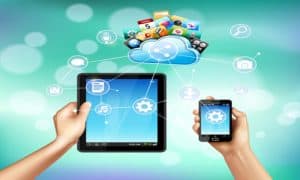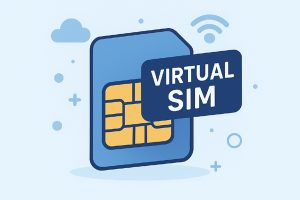Let me bring a scenario into the light. You visit your doctor, who captures what or how you are felling right now through implanted sensors. The information is than uploaded to a secure blockchain of your medical history, which provides the doctors with real-time access to it and helps in creating a digital picture of your body as well as discovers how the body would respond to specific medicines. It may look like a Hollywood movie scene now, but it’s now not too far off from reality.

Medical science has made enough progress in medicines, but it’s still not easy to quickly diagnose patients for their illnesses and put them on medications. Diagnoses of medical conditions still suffer from several hurdles. Also, even today’s modern technology applied at in diagnosis of medical conditions provides limited information.
Tools like X-rays, MRIs, ultrasound, and others are available for so long, but one major limitation is yet unchanged – diagnose can only be performed successfully if the patient and doctors are together and symptoms present. It’s a big challenge that has been existing for more than 4000 years when the Edwin Smith Papyrus, an ancient Egyptian medical text written.
But some interesting changes are ahead! These above mentioned challenges in medicine are now finally being addresses with IoT (Intent of Things). Fundamentally, IoT is totally based on digital data, which is generated by physical devices and then used to do things.
Same is the case with medicines. With IoT enabled sensors, doctors are able to see how patients are doing not only when they are in the doctors’ office, but also when they are at work or at home, doing workouts and performing other activities. These sensors keep collecting information, which helps doctors learned about variations in intervals and then diagnose a timely treatment for an illness.
Take the example of a cancer patient who requires the careful monitoring of weight. The controlled weight helps such patient stay healthy during the chemotherapy treatment. But there is no accurate indicator to report variations in weight. Slight gain or loss in weight is a normal fluctuation, but if a patient experiences significant weight-loss or weight-gain after the therapy, it may affect his or her ability to survive with treatment.
Maybe, doctors detect variations in weight too lately to address the issued caused. But sensors can record minute’s details and, the same can be transmitted to doctors, who can keep tabs on the data and then suggest a better amount of nutrition. Sensors can suggest adjustments in treatment plans to avoid a problem or side-effect caused by overdose.
The combination of sensors and IoT can also help in maintaining a measurement repository required to record health conditions. In result, analyzing an in-progress disease or identifying a developing disease will also be easier with the repository.
But it’s not easy to develop an application that can track / keep records of patients and their histories and equipments required in their treatments.
Table of Contents
What IoT means for those who rely on medicines to stay healthy:-
Those depending on IoT will see fewer occasions to see their doctors. They will have more time to do their routine work, instead. They will not need going for a variety of tests again and again as sensors will keep tabs on changes. They will require visiting doctors only when there would be need of adjusting their treatments. Of course, this will also be suggested by IoT.
Data security and privacy:-
Medical data is sensitive. Patients do not want to share their medical information excepting their doctor and family members. Unwanted disclosure of the medical information can cost a lot to a patient. IoT sensors and system that will collect this information are required to be protected from attackers and hackers.
Working with right people!
With the worldwide acceptance of the IoT technology, several IoT developers have emerged all around the IT industry. But there should be no hurry in hiring a development partner. Hire those developers only who are ready to sign all desired agreements protecting your interests. Do check the reputation of the development and its credibility in the market. No doubt you will also research whether the chosen developer is really able to deliver you the desired solution or not.
Regulation and approval process
Last but not least. Only the proper regulation and approval process will make your healthcare internet of things project successful. You need to work closely with regulators at each stage of IoT App development. You need to ensure that things are classified correctly, and there is no last minute cost related surprises for users.
Author Bio :- Sofia Coppol is a digital marketing expert in Rapidsoft Technologies, a leading IOT Development Company which provides Software for Education, Automation, Construction and Finance across the global. She loves to write on latest mobile trends, mobile technologies, startups and enterprises.


